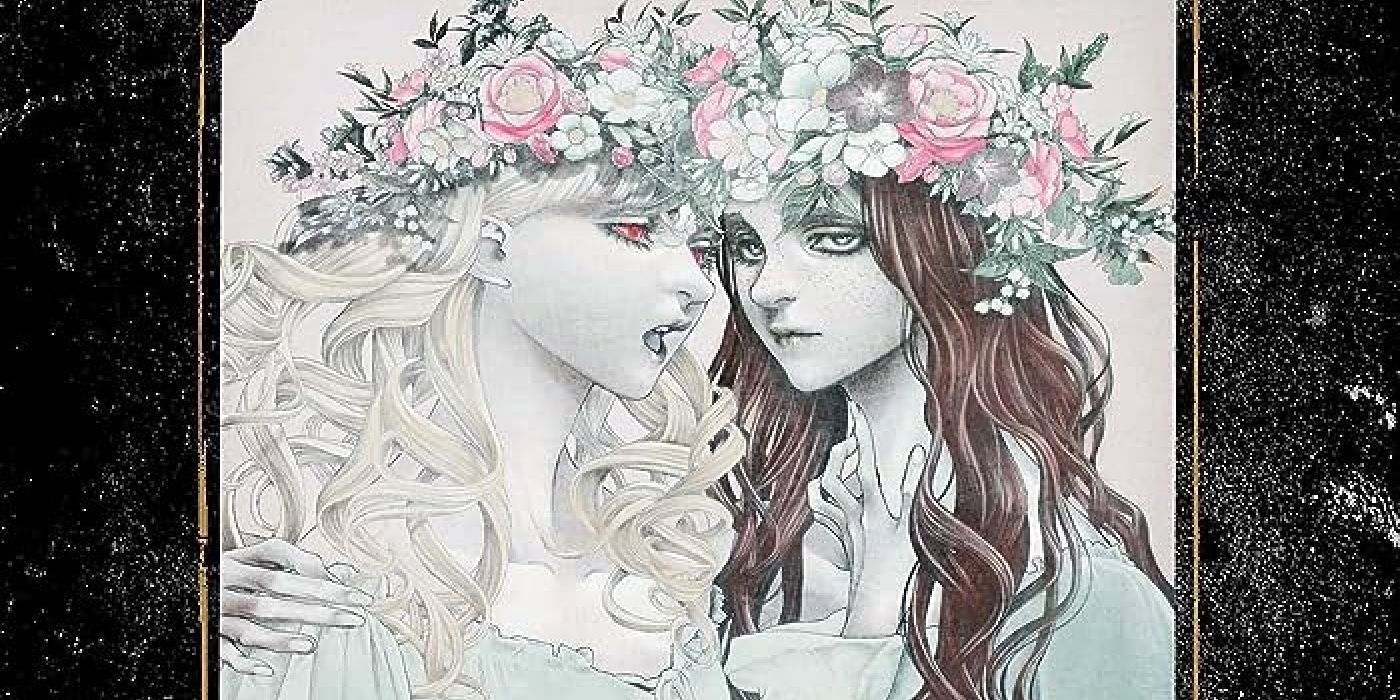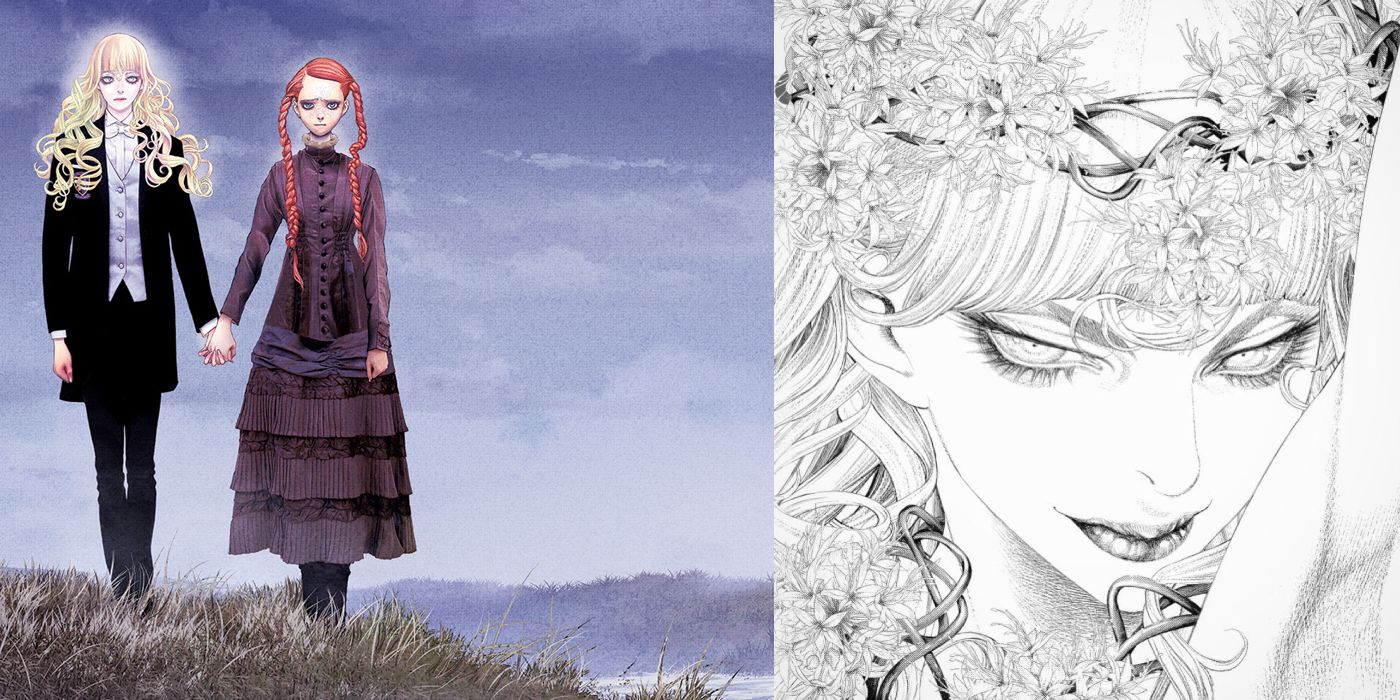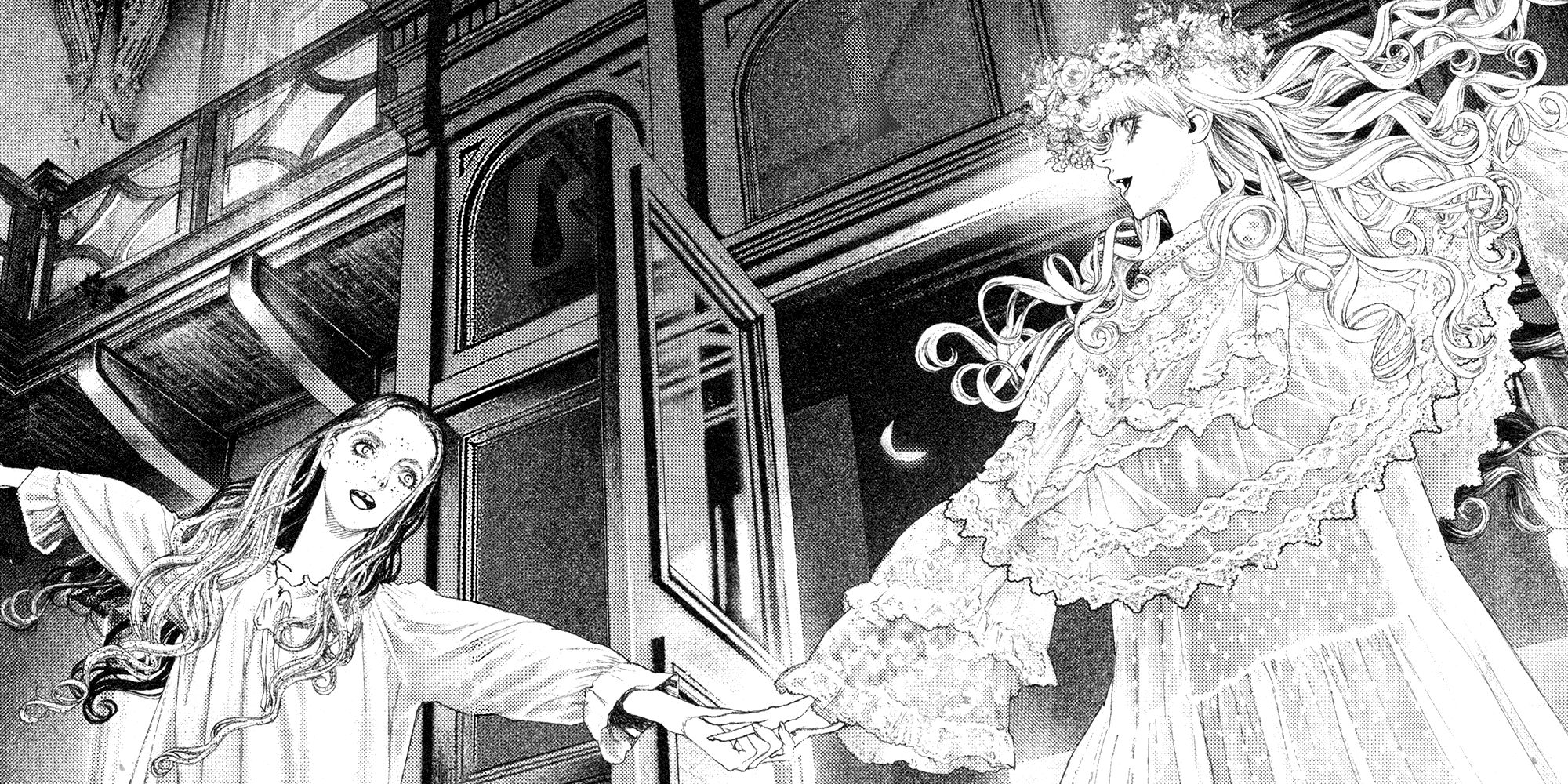#DRCL: Midnight Children is a unique retelling of Bram Stoker's Dracula. Created by Shin-ichi Sakamoto, the manga follows Mina Murray, the only female student at the prestigious Whitby School. Together with her classmates, she forms the Camellia Club to vanquish an ancient evil. The premise is adequately mysterious –and hints seeded throughout the book invite readers to question how much of what they're witnessing is reality. Unfortunately, this mystery is overshadowed by a critical flaw: the identity of Luke/Lucy Westenra.
Having released in English on September 19, Midnight Children reminds audiences several times throughout that it's meant to be a story where gender, nationality, and social status are disregarded in the face of a common enemy. A flashback provided by Quincy illustrates how critical it was for him that his close-knit friend group was as diverse as possible. The boys do torment Mina, but it's hinted that they will change their ways once the plot really gets going. Then, readers are introduced to Luke Westenra, a.k.a. Lucy Westenra, and confusion ensues.
Luke/Lucy's Identity Feels More Frustrating Than Inclusive
Luke is a delicate boy with a soft disposition; an artist prone to poetic, flowery language. Mina refers to him as "Lucy", making him a male replacement for the original Lucy in Bram Stoker's story. This in itself would be a fun, original twist. The waters get muddy, however, when readers learn that Lucy isn't just a cute pet name. Rather, this is the name of Luke's alter-ego, a female personality that only Mina seems to know. While this would normally be a positive sign of gender-nonconforming representation, the confusion comes from the context around the switch between Luke and Lucy.
When Lucy is first introduced, she's depicted as being curled up in a birdcage hidden beneath Luke's suit jacket. When he opens the jacket, the cage unlocks, and Lucy is freed. This feels like imagery mirroring how someone in 19th century Britain, like Luke, could feel that their true identity must be kept hidden and locked away. Later, Mina explains that Lucy only comes out at night, seemingly a result of sleepwalking, and that she doesn't remember anything that happens when Luke is in control. While more explicit than the birdcage imagery, this explanation feels less concrete, instead suggesting that Luke has something akin to Dissociative Identity Disorder.
#DRCL Unfortunately Plays Into Negative Stereotypes
While it's not impossible for someone with DiD to have personalities that identify as different genders, the fact that the line between this explanation and that of Luke being gender non-conforming is so blurry becomes a problem. Instead of emphasizing the shunning of stereotypes that Midnight Children wishes to champion, Luke/Lucy's character calls back to potentially harmful stereotypes and emphasizes them, detracting from their character and leaving readers befuddled as they try to figure out what exactly they're being told.
Sakamoto has managed to put a modern-feeling spin on the classic Dracula story, turning it into a manga with gorgeous art and a unique setting, as well as the hero of the story being young Mina. However, the confusing portrayal of Luke/Lucy muddles the story and keeps the readers' focus where it shouldn't be. The night has traditionally symbolized a time when people could explore their identity away from prying eyes, but could also be seen as a trigger for Luke's identity swap. The fact that the "real" explanation is never made clear only reinforces negative ideas about being transgender, something #DRCL: Midnight Children will have to address.
#DRCL: Midnight Children is available in English from Viz Media.



